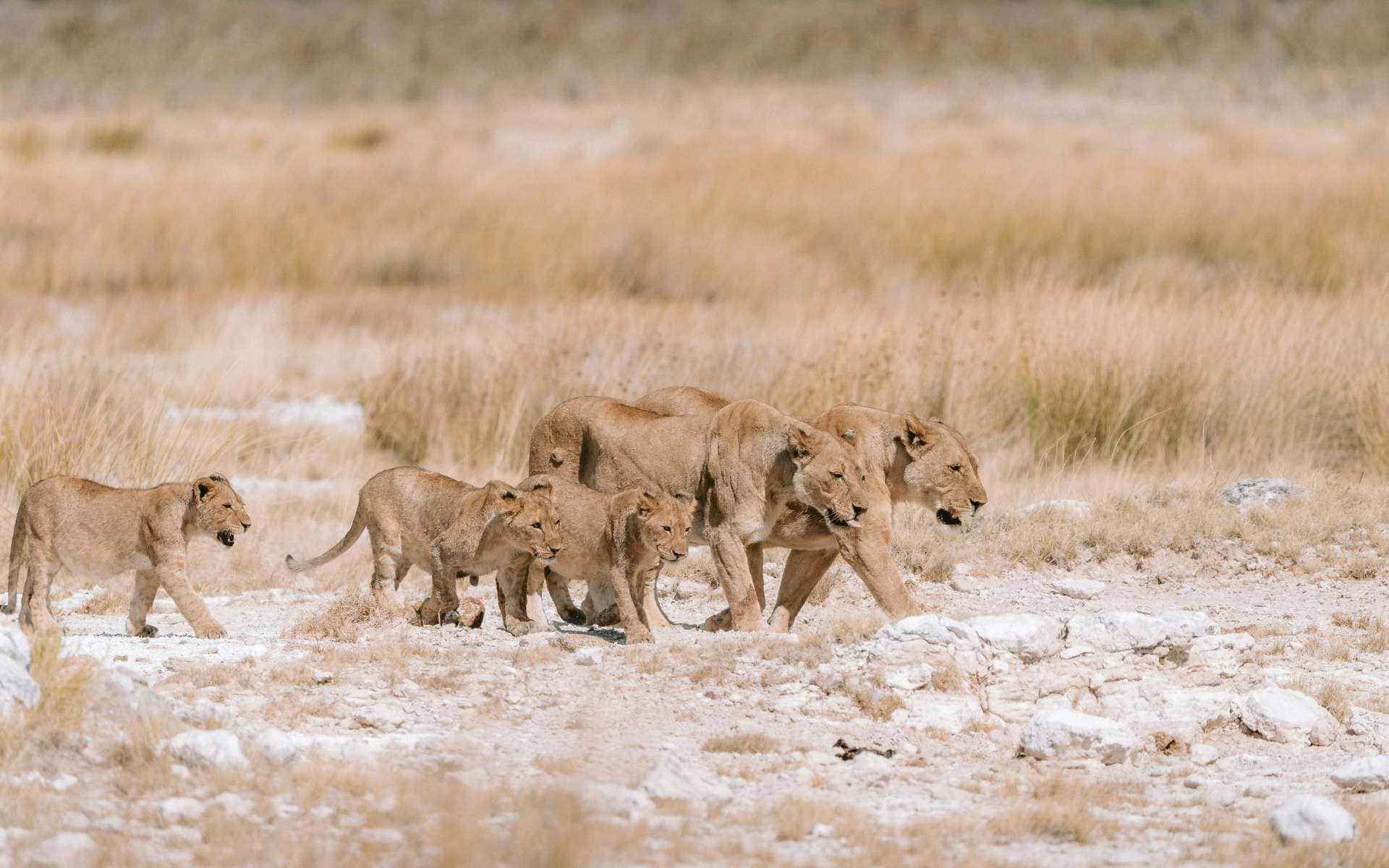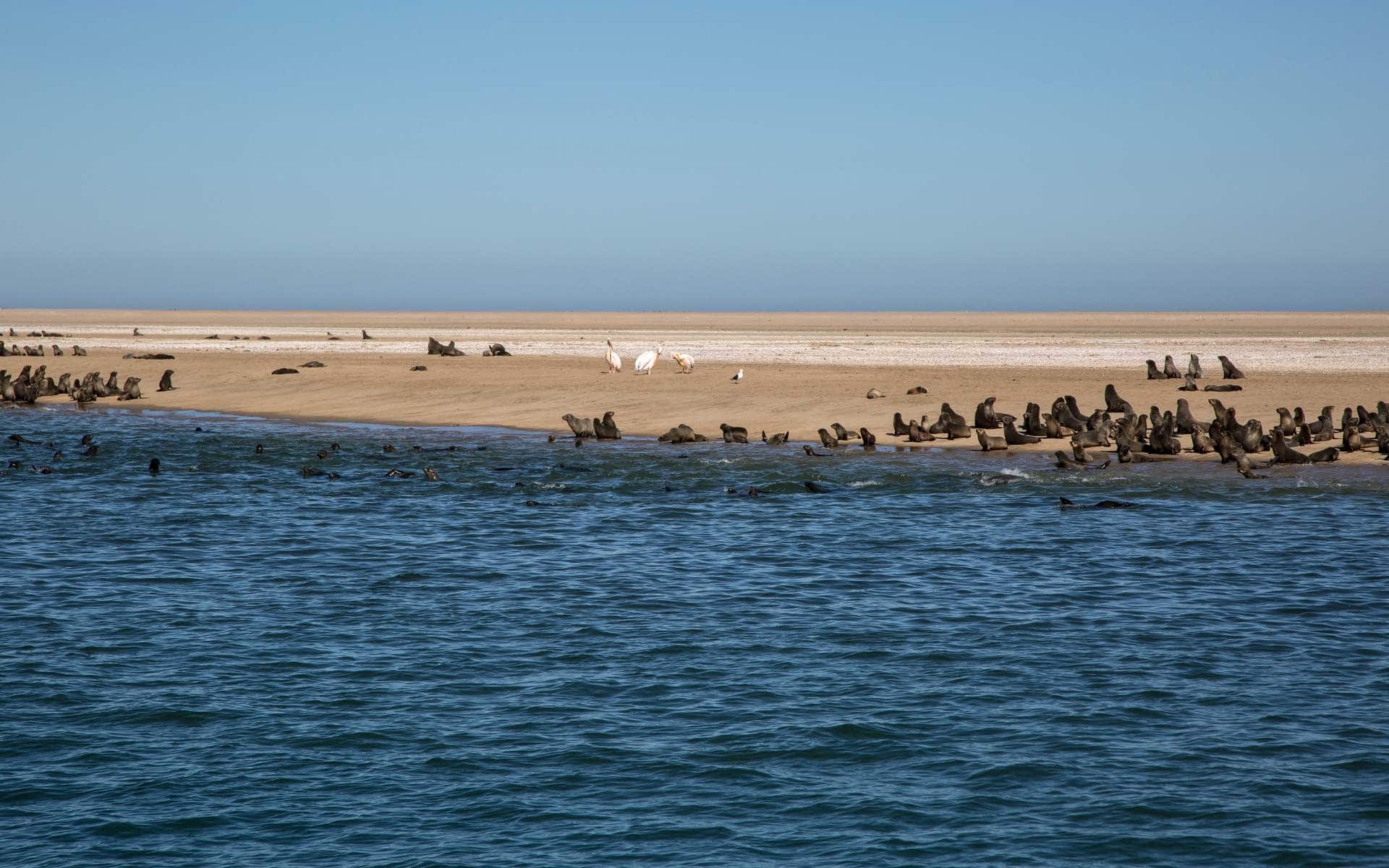After being decimated decades ago, Namibia’s desert lions are making a comeback along the Skeleton Coast of Namibia and using hunting techniques that were thought to be lost. Now, three of these desert-adapted lions are the subject of an award-winning film.
What Happened to Namibia’s Beach Lions?

The Skeleton Coast National Park was once home to a lion population that hunted along the coastline, with seals, whale carcasses, and waterbirds supplementing their diet alongside inland species such as antelopes.
Unfortunately, the harsh conditions of Namibia’s environment led to a clash between these lions and farmers, resulting in a large portion of the big cats being killed. By 1990, all lions of the Skeleton Coast National Park were gone, and it would be a decade before they were seen again.
But, luckily, they were!
In the early 2000s, the population of the national park began to recover. However, with a changed diet, they were no longer hunting marine prey. The knowledge of hunting Cape fur seals, cormorants, and beached whales seemed to have died along with the previous lions. At this time, the few desert-adapted lions survived by hunting inland prey, like zebras and giraffes.
That is, until very recently… This marine knowledge has seen a resurgence in the form of three orphaned lion cubs.
The Story of Alpha, Bravo, and Charly
Desert lion cubs, Alpha, Bravo, and Charly, were born in 2015 and tragically became orphans at just 10 months old. Researchers worried that these cubs wouldn’t survive, especially in the harsh desert conditions.
That is, until they were seen leading a coastal hunting revival on the beaches around Torra Bay along the Skeleton Coast.
With dwindling prey animals inland, these lionesses started targeting marine birds, such as cormorants, flamingos, and red-billed teals. In 2018, the scientists at the Desert Lion Conservation Trust (DLCT) witnessed the lionesses hunting Cape fur seals, something that hadn’t been seen in over 40 years! It was then observed that marine foods accounted for over 80% of the diet of these lionesses.
This conservation success story inspired a documentary that tracked these extraordinary lionesses, who have become the poster cubs for the resurgence of the Skeleton Coast lion population.
Lions of the Skeleton Coast
Alpha, Bravo, and Charly are the stars of the film Lions of the Skeleton Coast, filmed by award-winning wildlife filmmakers Will and Lianne Steenkamp over eight years. This story follows how these lions survived Namibia’s harsh desert conditions by going back to long-forgotten hunting techniques.
Lions of the Skeleton Coast was released to critical acclaim. At the Cannes Corporate Media and TV Awards in France in 2024, it won four trophies: Best Nature and Wildlife; Best Environment, Ecology, and Sustainability; Best Cinematography; and Best of Festival, the Grand Prix.
What Do These Lions Mean for Tourists to Namibia?

During a Namibia safari, the Skeleton Coast is often a highlight. Fishers are especially attracted to this area for catching kabeljou and bronze whalers. So, with the popularity of this region, can tourists and lions coexist?
Namibia’s Ministry of Environment, Forestry, and Tourism and the DLCT created a geofence, or virtual fence, that communicates with the satellite collars on the lions.
If a lion approaches a 40 km (almost 25 mi) stretch of beach around Torra Bay, a popular fishing and camping area, the system records the animal’s GPS coordinates and sends automatic alerts to the DLCT’s lion rangers and managers of the local campsite. The area is then closed to visitors, and anglers and tourists are asked to leave the beach.
It’s important to state that no one has been injured by the lions – the fence line is just a precaution. Also, it has been noted that the lions seem to actively avoid contact with humans.
One of the lioness’ movements recorded her adapting to the presence of anglers and tourists on the coast so as not to come into contact with them. She moved inland to rest during the day, only coming out at night to hunt along the beach.
It’s encouraging to see these incredible desert-adapted lions making a comeback in the Skeleton Coast National Park and that their marine-hunting knowledge wasn’t lost even after so many years. Thanks to efforts from Namibia’s government and the DLCT, we hope to continue to witness the growth of these big cats!
Author: Paula Rabeling
Published: 30 January 2025